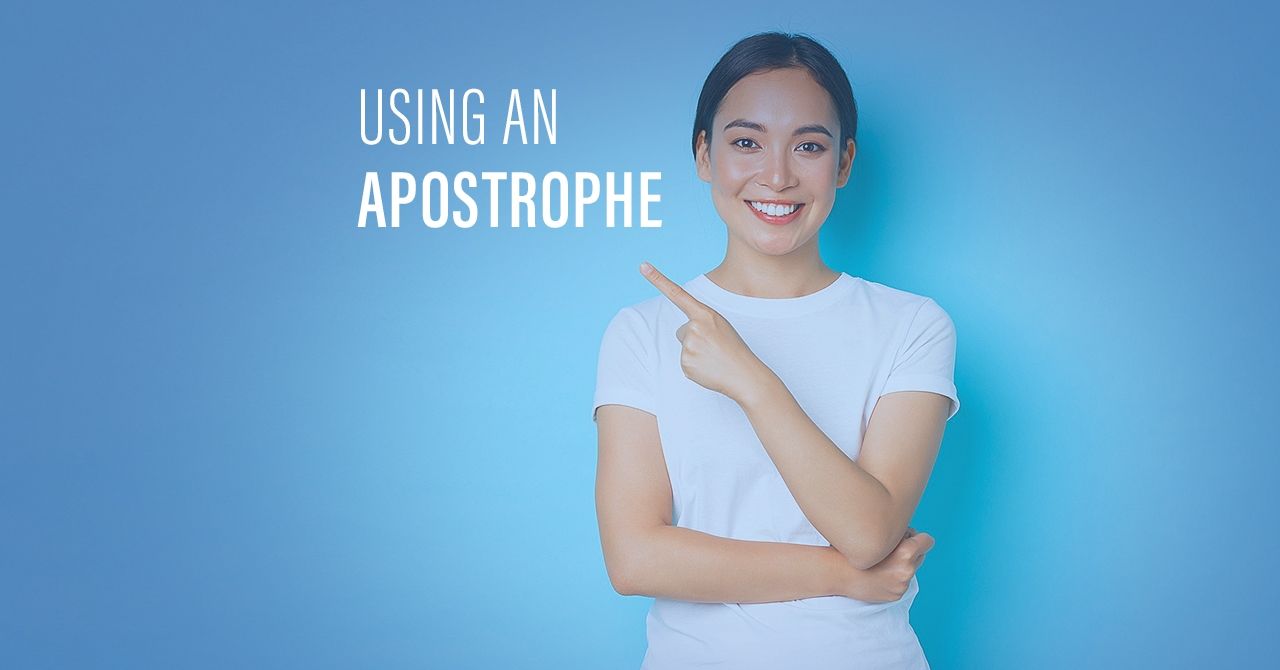
Examples of how and when to use an apostrophe
No matter whether you learned English from birth or have only started learning recently, you will undoubtedly have had trouble with apostrophes.
Apostrophe rules
No matter whether you learned English from birth or have only started learning recently, you will undoubtedly have had trouble with apostrophes. The rules to remember are that if something belongs to someone, then we need an apostrophe plus the letter “s” to form possessive nouns. Secondly, apostrophes are used for contractions, meaning when two words are put together to create one shorter and simplified word.
When to use an apostrophe
Possession
The apostrophe and “s” combination is drilled into children from a young age, but that doesn’t mean we don’t forget every now and again. If a noun belongs to something or someone, then we use the possessive apostrophe.
Examples:
The brown briefcase is John’s.
They are Sarah’s earrings, I will give them to her.
I live next to a field where the farmer’s cows live.
When we’re talking about a singular proper noun that ends in the letter “s,” there is no standard rule because different guides recommend different things. This means that all names ending in “s” can either take a simple apostrophe or apostrophe plus “s,” and neither is incorrect.
Examples:
I work with Chris’ brother, or I work with Chris’s brother.
Dickens’ novels are famous worldwide, or Dickens’s novels are famous worldwide.
I want to visit Paris’ quaint cafés, or I want to visit Paris’s quaint cafés.
Contractions
The other use of apostrophes is for contractions. When two words are put together and one letter is omitted, we replace it with an apostrophe. This is the case for many common, everyday words such as for the verbs to be and to have, as well as negative sentences.
Let’s take a look at the verb “to be” with the uncontracted and contracted forms:
| Uncontracted form | Contracted form |
|---|---|
| I am | I’m |
| You / we / they are | You’re / we’re / they’re |
| He / she / it is | He’s / she’s / it’s |
Contractions are extremely common with negation. The letter “o” in the word “not” is frequently omitted and replaced by an apostrophe. Here are a few examples:
- are not - aren’t
- is not - isn’t
- cannot - can’t
- do not - don’t
- does not - doesn’t
- will not - won’t
Contractions can be used for many other verbs and in a variety of different tenses.
Plurals with apostrophes
If an item belongs to more than one person or group, you will need to use the plural noun. This complicates matters in terms of apostrophes, as it becomes unclear whether to place the apostrophe before or after the “s.” If the plural noun doesn’t end in the letter “s,” then the rule remains the same: add apostrophe plus “s.”
Examples:
The children’s clothes.
The women’s houses.
The mice’s food.
When the plural noun ends in an “s,” then we do not add an apostrophe. The word should simply finish with the apostrophe.
Examples:
The girls’ mother was at work.
I need to find my dogs’ treats.
Both the books’ titles are the same.
Hello! My name is Beth. I'm from France. I'm a French and English native speaker and I really like writing.

